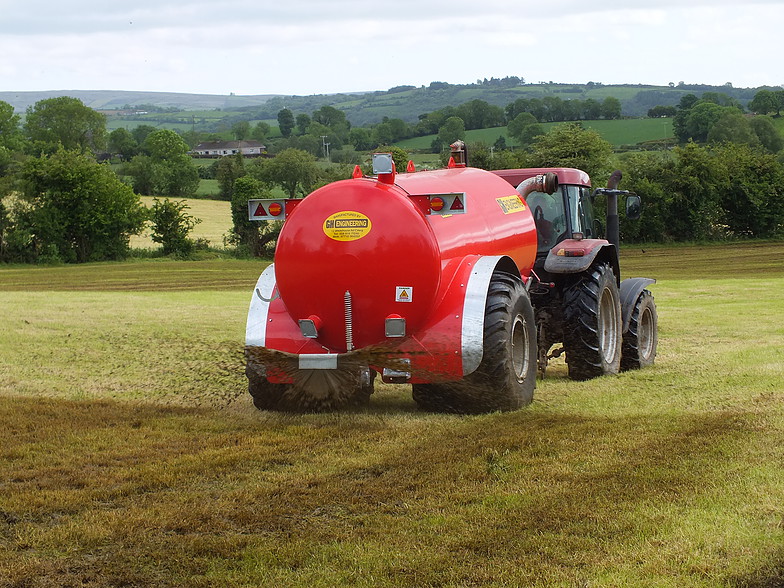The method of slurry application, splashplate or trailing shoe/band spreader, will have a large effect on nitrogen losses, according to Teagasc.
The splashplate technique broadcasts slurry across the full spread width and depending on timing and weather conditions, high levels of ammonia-N loss may occur as a result.
Teagasc trials have shown that losses of ammonia to the air are at their highest in the 24-hour period immediately after slurry application, with the initial six-hour period being most critical.
Losses of ammonia are caused by weather conditions that cause excessive drying of the slurry, particularly warm, dry and sunny conditions.
Lower emission systems such as the trailing shoe or band spreader places the slurry in a narrow band close to the soil surface below the grass canopy therefore reducing the risk of N losses.
Switching from a splashplate application method to a a trailing shoe or band spreader application process will increase the N value by approximately 3 units per 1000 gallons.
While spreading slurry during spring rather than summer will see a similar increase in N values per 1000 gallons.

Injection methods of slurry reduced losses of nitrogen to in the region of less than 10% whereas losses after splash plate application amounted to more than 30%.
Other benefit includes of switching from a splashplate application system include –
- A wider window of opportunity for application in better soil conditions.
- Improved flexibility with application as a result of reduced contamination of herbage leading to a quicker return to grazing.
- The opportunity to apply slurry onto swards with larger grass covers.
- The odours released during and after application are also usually reduced when using a trailing shoe or band spreader method compared to a splashplate.
The cost – is it worth it?
Investment by an individual farmer in a trailing shoe or band spreader may be cost prohibitive as the savings in N fertiliser may not cover the extra costs associated with farmer owned equipment.
This will depend on the volume of slurry spread on the farm and the value placed on other potential benefits, which include flexibility of timing onto swards with greater pre-grazing sward heights and reduced odours.
Where a farmer is already using a contractor for applying slurry using a splashplate, changing to a contractor who can use a bandspreader, trailing shoe or shallow injection system may be cost effective.
The contractor price is usually higher per hour, but the value of slurry is increased by approximately €1.50 per 1,000 gallons by these methods.
According to Teagasc depending on the volume spread per hour, a higher cost per hour of the contractor can often be justified for using lower emission techniques.
Low Emission Slurry Spreading (LESS) Equipment Scheme provides a grant to farmers under the TAMS II scheme to purchase new equipment for spreading slurry which has distinct environmental advantages.
